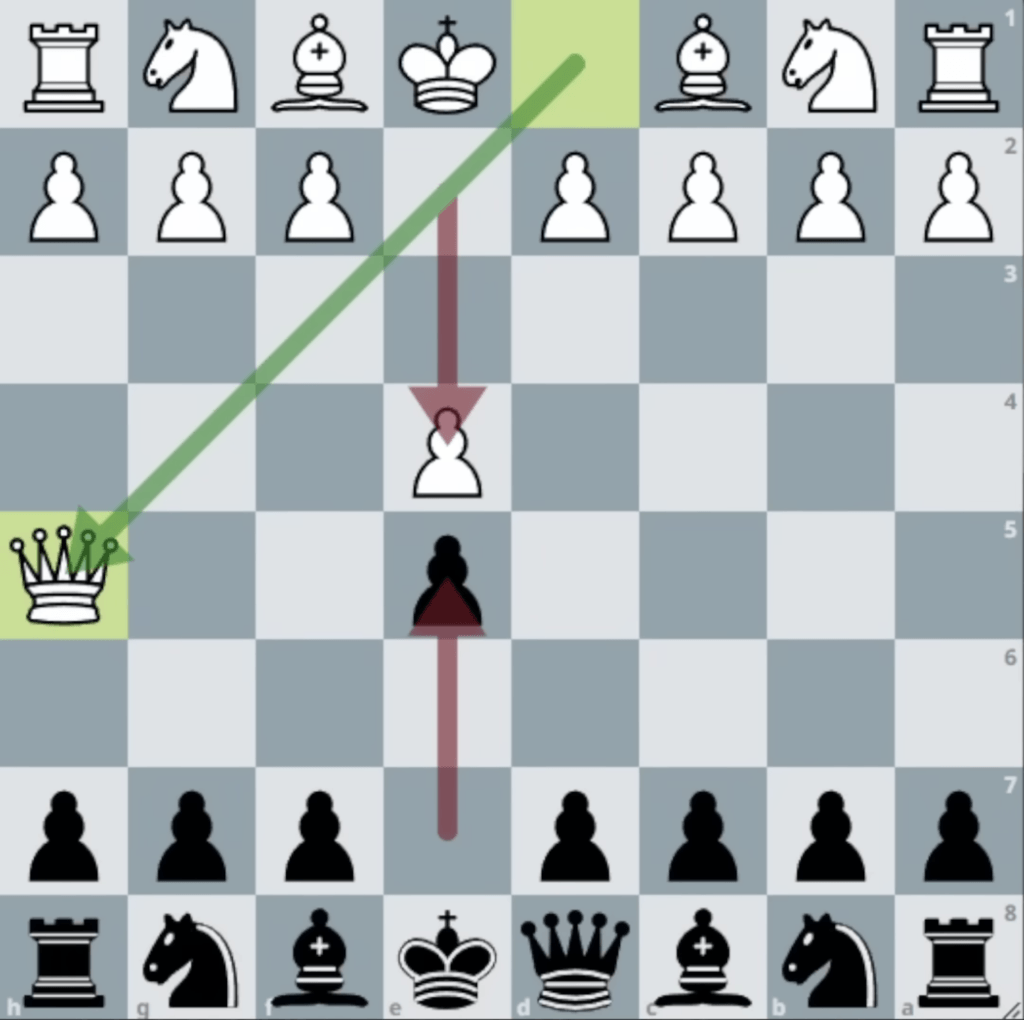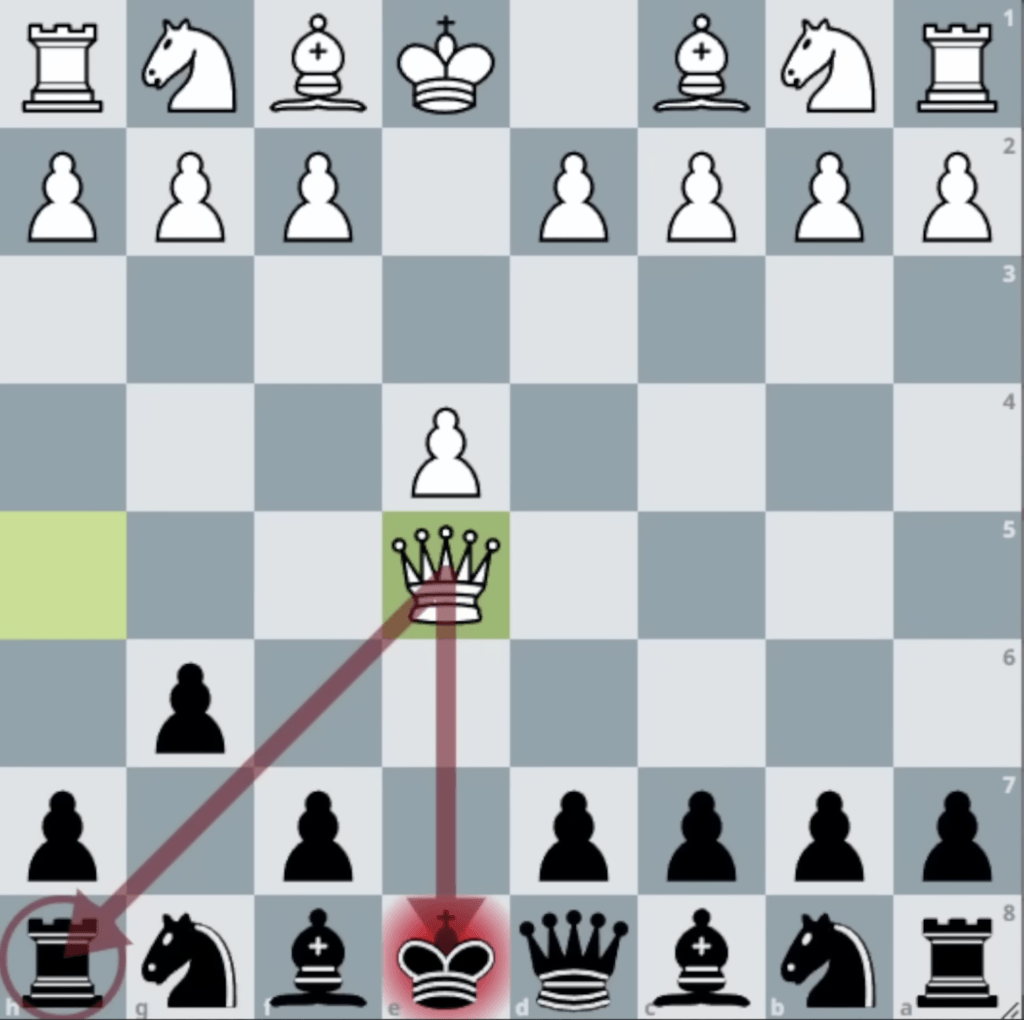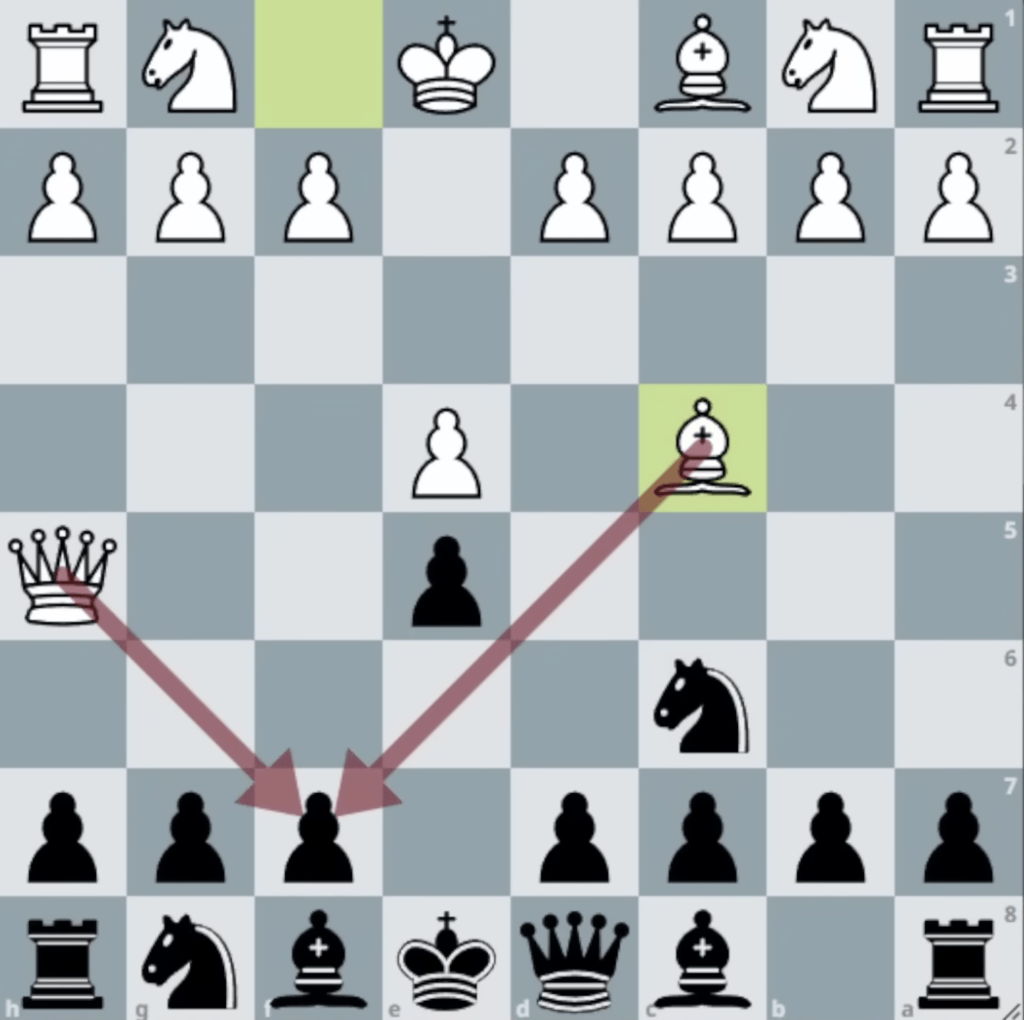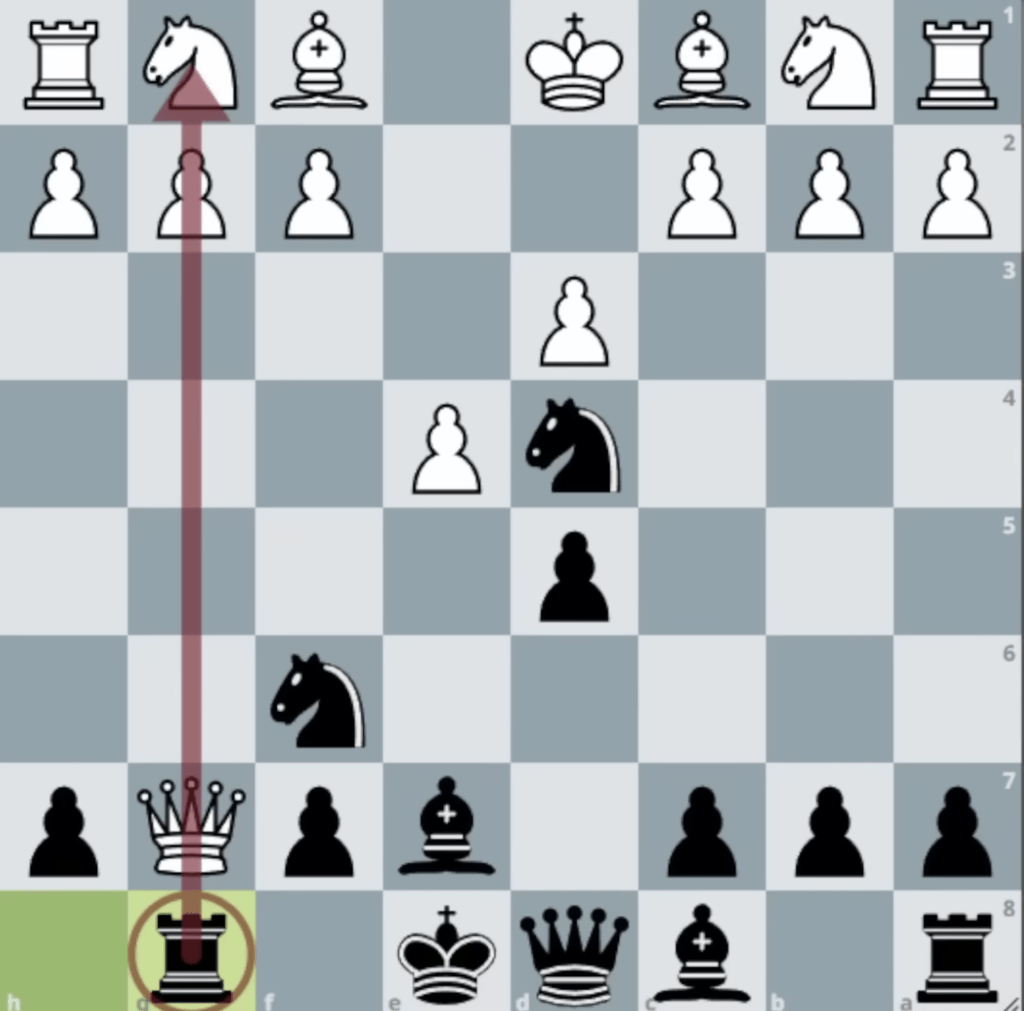Have you ever started a game and your opponent comes out early with their queen? Learning how to punish early queen attacks is a great way to get a leg up on your opponent.
How to Punish Early Queen Attacks
Putting pressure on the attacking queen while developing your knights and bishops is a great way to gain major positional advantage while the queen runs all over the board.
Let’s examine the risks and rewards of attacking early with the queen, how to defend the Wayward Queen attack, and then how to counterattack while developing our key pieces in the process.
Understanding the Risks and Benefits of Early Queen Attacks
When your opponent comes out guns blazing with their queen toward the center of the board with one of their very first moves they are clearly trying to establish dominance and gain a positional advantage.
But these attacks can have risks, and when counterattacked correctly you can have your opponent’s queen running scared all over the board while you develop key pieces.
The benefit to bringing out a queen early is to gain control of the center and to force the opponent into being reactive instead of attacking.
However, no matter how strong the queen is, when she’s left out in the open against an entire counterattacking army, she can be vulnerable.
Sometimes queen’s attacks can be predictable, and by waiting for mistakes and counterattacking you can complete disrupt your opponent’s plans.
Defending the Wayward Queen Attack

This is a very common opening called the Wayward Queen attack. It starts with 1. e4 e5 and then aggressively bringing out the queen to h4.
The point of this is to put pressure on you e4 pawn, and what you see many beginners do is try to attack the queen with pawn to g3 which is a huge mistake.

As you can see this immediately puts you in a horrible spot, with your king in check and your rook about to be captured.
If you opt to instead bring out your queenside knight to protect the e4 pawn another attack you’ll see is bringing out the bishop to threaten checkmate at f2.

If you don’t see this quickly enough and say you bring your other knight to f3 to threaten the queen you’ll fall into what is called Scholar’s Mate and the game is over in 4 moves.

Put Pressure on Early Queen Attacks While Developing Your Knights and Bishops
Often times the best defense is a good offense.
A great way to counter an early, aggressive queen is to put pressure on the attacking queen with your bishops and knights.
In doing so you’re actually going to get free moves out of it. What does that mean?
It means that when you’re able to put pressure on the aggressive queen with your knights and bishops your opponent is forced to move their queen out of harm’s way.
This a move spent that they couldn’t use to develop their other key pieces. Meanwhile, you’re bringing out more and more pieces, establishing control of the center and attacking the queen while she’s running all over the board.
Developing your knights, bishops, and rooks will quickly draw your opponent’s queen back to their side of the board to focus on developing their pieces to match yours.
Don’t Lose Focus! Stay Alert to Basic Queen Threats
When you start to aggressively attack and counterattack your opponent’s queen, it’s easy to lose focus of the queen’s main attacks.
Always fall back to the principles of good early defense.
Take the Scholar’s Mate mentioned earlier. By brining out your knight to threaten the queen you leave yourself open to checkmate and the game is over.
Always take a beat and ask yourself,
- “Is the queen threatening mate or checkmate with her current position?”
- “Am I defending against that?”
- “Will my next attack take me out of my defending position and vulnerable?”
It’s Ok to Lose Pawns If You’re Developing Pieces in the Process
Something beginner players often lose sight of is the big picture.
We become so afraid of losing material advantage that we don’t see the bigger, more important picture of developing key pieces.
When you’re attacking the queen, developing all four of your knight’s and bishops, it’s ok if along the way a pawn is sacrificed here and there.
In particular, it’s ok to lose your b and g pawns if it means you’re developing your rooks.
In this example below, the opponent’s queen has taken our g pawn. We simply move our rook into position and because it’s protected by the knight who is also protected by our bishop, we’ve actually brought our rook into the game and again the queen has to run for cover.

Using Solid Pawn Structure to Limit the Queen’s Movement
As mighty as the queen is, pawns can absolutely push her back.
Use them strategically. Allow them to defend each other. Moving pawns that are ahead of your bishops opens further lanes of attack for those pieces as well.
When your opponent’s queen sidesteps an attack, why not bring out one of your knights to threaten her again?
An overly aggressive queen can find herself trapped with no clear way out.
If you can capture that attacking queen early, 9 out of 10 times it’s game over.
But, again, don’t be reckless while doing it. Maintain your pawn structure, don’t get your pieces all misaligned.
This is exactly what your opponent wants, and if you’re focusing too much on attacking their aggressive queen, leaving openings in your defense, they’ll slide in with a surprise bishop suddenly behind your lines of defense to threaten your king.
Be aggressive but controlled with your counterattacks.
Final Thoughts
Putting pressure on your opponent’s early attacking queen while developing your knights and bishops can quickly give you the advantage. Don’t lose focus of the queen’s main attacks and maintain solid defense while counterattacking
What do you think? Do you agree with these strategies against early attacking queens? Do you have some go-to moves you’ve used in the past to punish that aggressive queen? Let me know what you think in the comments below! I love to hear what you have to say and I always respond!
Like This Article? Pin It!




What should a player do if their opponent continues to push their queen forward, even after they’ve established control of the center and developed their pieces? Is there a certain point where sacrificing a piece might be worth it in order to gain an advantage, or is it better to play it safe and wait for the opponent to make a mistake?
Usually an overly aggressive queen will find herself in a hole. No matter how strong a queen is she can’t go through solid defense. As long as you stick to the fundamentals of controlling the center and not losing track of obvious queen attacks and forks, you’ll be ok. Thanks for the comment!
I loved how you explained the risks and benefits of early queen attacks. Your suggestions for defending against the Wayward Queen attack and developing knights and bishops were also really clear and easy to understand.
I especially appreciated your advice about sacrificing pawns – I tend to try to swap pieces, but now I see that it can actually be a smart move. And thank you for reminding me about the importance of solid pawn structure! Sometimes I get so focused on attacking the queen that I forget about the rest of the board. I really appreciate it!
Best regards, Julia
I’m glad this post helped you! The more you play the more you learn! Thanks for the comment!
What a rather unique style of adapting to an early level queen attack with counter attacks.
I enjoyed watching the video that tells you exactly what you described in the article. It’s best to not over-think the attack on the queen so early, rather to adapt and play your pieces in a sense of structure and setup to go after the queen in return.
Smart utilization of strategy! Time to play a game! Thanks for the article.
Glad you enjoyed it! See you on the chessboard!
Dear Sir: Thank you for your very simple explanation since I get attacked by early queens a lot! The diagrams are very clear and large enough for me to see (I am 73.) Thanks again, DNS
Glad you enjoyed this! Happy playing!